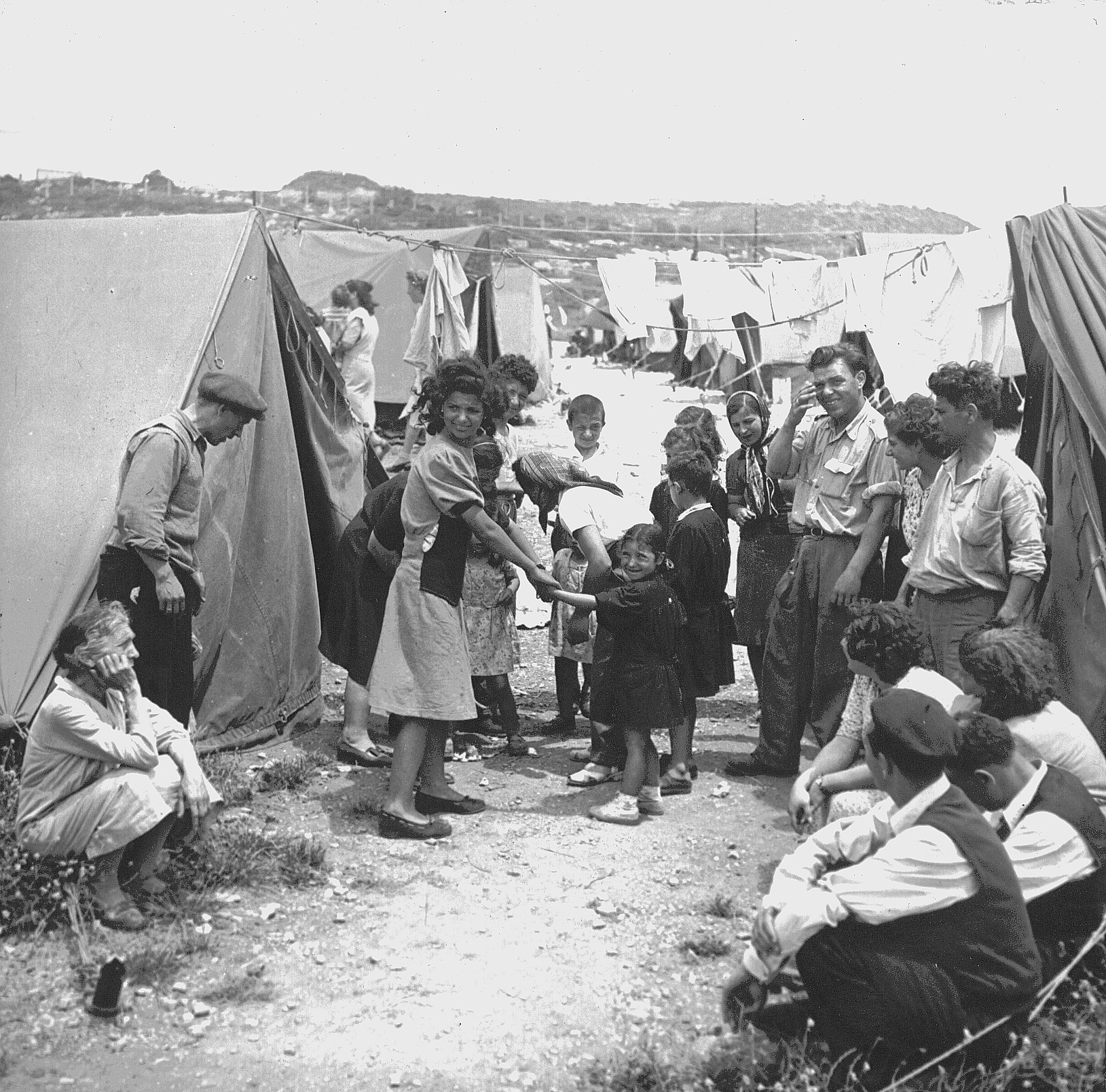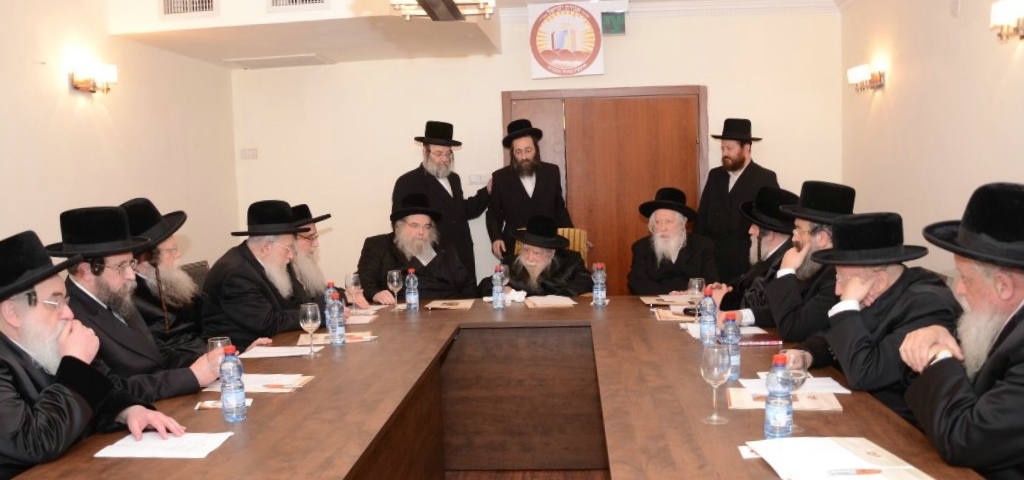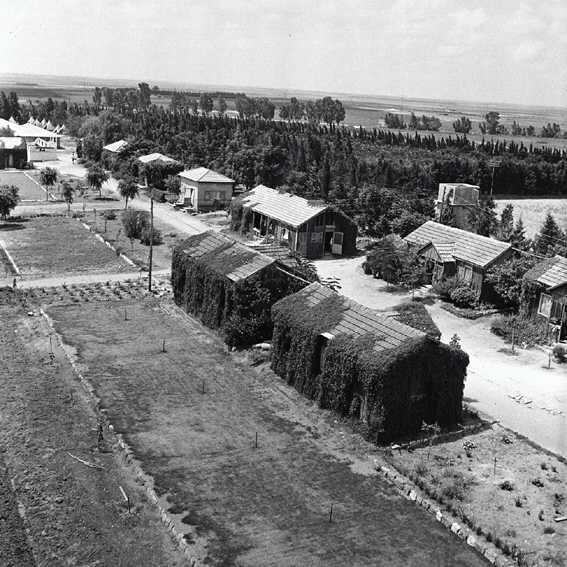|
Ma'abara
Ma'abarot ( he, מַעְבָּרוֹת) were immigrant and refugee absorption camps established in Israel in the 1950s, constituting one of the largest public projects planned by the state to implement its sociospatial and housing policies. The ma'abarot were meant to provide accommodation for the large influx of Jewish refugees and new Jewish immigrants (''olim'') arriving to the newly independent State of Israel, replacing the less habitable immigrant camps or tent cities. In 1951 there were 127 Ma'abarot housing 250,000 Jews, of which 75% were Mizrahi Jews; 58% of Mizrahi Jews who had immigrated up to that point had been sent to Ma'abarot, compared to 18% of European Jews. The ma'abarot began to empty by the mid-1950s, and many formed the basis for Israel's development towns. The last ma'abara was dismantled in 1963. The ma'abarot became the most enduring symbol of the plight of Jewish immigrants from Arab lands in Israel; according to Dalia Gavriely-Nuri, the memory of ... [...More Info...] [...Related Items...] OR: [Wikipedia] [Google] [Baidu] |
One Million Plan
The One Million Plan (;''Tochnit hamillion'') was a strategic plan for the immigration and absorption of one million Jews from Europe, the Middle East, and North Africa into Mandatory Palestine, within a timeframe of 18 months, in order to establish a state in that territory. After being voted on by the Jewish Agency for Israel Executive in 1944, it became the official policy of the Zionist leadership. Implementation of a significant part of the One Million Plan took place following the establishment of the State of Israel in 1948. When the extent of the decimation of Jews in the Holocaust became known in 1944, the Biltmore Conference ambition of two million immigrants was revised downwards, and the plan was revised to include, for the first time, Jews from the Middle East and North Africa as a single category within the target of an immigration plan.: "The principal significance of this plan lies in the fact, noted by Yehuda Shenhav, that this was the first time in Zionist hist ... [...More Info...] [...Related Items...] OR: [Wikipedia] [Google] [Baidu] |
Development Town
Development towns ( he, עיירת פיתוח, ''Ayarat Pitu'ah'') were new settlements built in Israel during the 1950s in order to provide permanent housing for a large influx of Jewish immigrants from Arab countries, Holocaust survivors from Europe and other new immigrants (Olim), who arrived to the newly established State of Israel. The towns were designed to expand the population of the country's peripheral areas while easing pressure on the crowded centre. Most of them were built in the Galilee in the north of Israel, and in the northern Negev desert in the south. In addition to the new towns, Jerusalem was also given development town status in the 1960s. In the context of the Arab–Israeli conflict, Jewish refugees from Arab states were initially resettled in refugee camps, known variously as immigrant camps, ''ma'abarot'' and development towns. Development towns were subsequently considered by some to be places of relegation and marginalisation. Background At the end ... [...More Info...] [...Related Items...] OR: [Wikipedia] [Google] [Baidu] |
Jewish Exodus From Arab And Muslim Countries
The Jewish exodus from the Muslim world was the departure, flight, expulsion, evacuation and migration of around 900,000 Jews from Arab countries and Iran, mainly from 1948 to the early 1970s, though with one final exodus from Iran in 1979–80 following the Iranian Revolution. An estimated 650,000 of the departees settled in Israel. A number of small-scale Jewish migrations began in many Middle Eastern countries early in the 20th century with the only substantial aliyah (immigration to the area today known as Israel) coming from Yemen and Syria. Few Jews from Muslim countries immigrated during the period of Mandatory Palestine. Prior to the creation of Israel in 1948, approximately 800,000 Jews were living in lands that now make up the Arab world. Of these, just under two-thirds lived in French- and Italian-controlled North Africa, 15–20% in the Kingdom of Iraq, approximately 10% in the Kingdom of Egypt and approximately 7% in the Kingdom of Yemen. A further 200,000 live ... [...More Info...] [...Related Items...] OR: [Wikipedia] [Google] [Baidu] |
Pardesiya
Pardesiya ( he, פַּרְדֵּסִיָּה) is a town in the Central District of Israel. Located on the Sharon plain, between Kfar Yona and the Lev HaSharon Regional Council, it was founded between 1937 and 1939. In it had a population of ; its jurisdiction is 1,273 dunams (~1.3 km2) History Before the 20th century, Pardesiya (from Arabic, Ghabet Fardisya) formed part of the Forest of Sharon, a hallmark of the region’s historical landscape. It was an open woodland dominated by Mount Tabor Oak (Quercus ithaburensis), which extended from Kfar Yona in the north to Ra’ananna in the south. The local Arab inhabitants traditionally used the area for pasture, firewood and intermittent cultivation. The intensification of settlement and agriculture in the coastal plain during the 19th century led to deforestation and subsequent environmental degradation known from Hebrew sources. The lands of Pardesiya were purchased in 1928 by Jean-Yona Fisher, but remained unused. In ... [...More Info...] [...Related Items...] OR: [Wikipedia] [Google] [Baidu] |
Nahariya Maabara
Nahariya ( he, נַהֲרִיָּה, ar, نهاريا) is the northernmost coastal city in Israel. In it had a population of . Etymology Nahariya takes its name from the stream of Ga'aton (river is ''nahar'' in Hebrew), which bisects it. History Early Bronze Age The ruins of a 3,400-year-old Bronze Age citadel were found in the coastal city of Nahariya near the beach on Balfour Street, at a site known to archaeologists as ''Khirbet Kabarsa''. The citadel was an administrative center serving the mariners who sailed along the Mediterranean coast. There is evidence of commercial and cultural relations with Cyprus and the rest of the Mediterranean region. The fortress was destroyed four times by conflagration and rebuilt each time. Byzantine period A church from the Byzantine period, dedicated to St. Lazarus, was excavated in the 1970s. It was destroyed by fire, probably at the time of the Persian invasion in 614. British Mandate of Palestine In 1934, work began to found Nahar ... [...More Info...] [...Related Items...] OR: [Wikipedia] [Google] [Baidu] |
Kesalon
Ksalon ( he, כְּסָלוֹן) is a moshav in central Israel. Located near Beit Shemesh, it falls under the jurisdiction of Mateh Yehuda Regional Council. In it had a population of . History The first transit camp (Ma'abarot, ma'abara) for new Jewish immigrants was set up in 1950 on the lands of the depopulated Palestinian people, Palestinian village of Kasla, Jerusalem, Kasla. New immigrants from Yemen brought to Israel in Operation Magic Carpet were given farmland there, but abandoned the moshav a few years later to join members of the Yemenite community living in Rosh Ha'ayin. Their place was taken by Jewish immigrants from Morocco. The moshav was named for the Bible, biblical city of Ksalon mentioned in , which was probably situated on the Tell (archaeology), tel nearby and preserved in the Palestinian name of the place.Bitan, Hanna: 1948-1998: Fifty Years of 'Hityashvut': Atlas of Names of Settlements in Israel, Jerusalem 1999, Carta, p.31, References {{Mateh Yeh ... [...More Info...] [...Related Items...] OR: [Wikipedia] [Google] [Baidu] |
Judean Hills
The Judaean Mountains, or Judaean Hills ( he, הרי יהודה, translit=Harei Yehuda) or the Hebron Mountains ( ar, تلال الخليل, translit=Tilal al-Khalīl, links=, lit=Hebron Mountains), is a mountain range in Palestine and Israel where Jerusalem, Hebron and several other biblical cities are located. The mountains reach a height of . The Judean Mountains can be separated to a number of sub-regions, including the Mount Hebron ridge, the Jerusalem ridge and the Judean slopes. The Judaean Mountains formed the heartland of the Kingdom of Judah (930-586 BCE), where the earliest Jewish settlements emerged, and from which Jews are generally descended. Geography The Judaean mountains are part of a more extended range that runs in a north-south direction. The ridge consists of the Samarian Hills in its northern part, and of the Judaean mountains in its southern part, the two segments meeting at the latitude of Ramallah. The westward descent from the hard limestone country of ... [...More Info...] [...Related Items...] OR: [Wikipedia] [Google] [Baidu] |
Giora Yoseftal
Dr Giora Yoseftal ( he, גיורא יוספטל; 9 August 1912 – 23 August 1962) was an Israeli politician who held several ministerial portfolios in the late 1950s and early 1960s. Biography Born Georg Josephthal in Nuremberg in Germany, Yoseftal was a member of the Yiddisher Yudenbund youth movement in his teens. After high school he studied law and economics at the University of Heidelberg, Berlin, Munich and Basel, gaining a PhD in jurisprudence at the latter. In 1932, he joined Habonim, and the following year was appointed head of the youth department of the Bavarian Jewish community. He moved to Berlin in 1934, and two years later was elected secretary general of the German branch of HeHalutz. In 1936 he married Senetta Yoseftal, later also an Israeli politician. Yoseftal made aliyah to Mandate Palestine in 1938, and two months after arriving, he was sent to London to try to save German Jewry. He returned to Palestine in 1939, establishing a work brigade in Ra'anana, w ... [...More Info...] [...Related Items...] OR: [Wikipedia] [Google] [Baidu] |
Agudat Israel
Agudat Yisrael ( he, אֲגוּדָּת יִשְׂרָאֵל, lit., ''Union of Israel'', also transliterated ''Agudath Israel'', or, in Yiddish, ''Agudas Yisroel'') is a Haredi Jewish political party in Israel. It began as a political party representing Haredi Jews in Poland, originating in the Agudath Israel movement in Upper Silesia. It later became the Party of many Haredim in Israel. It was the umbrella party for many, though not all, Haredi Jews in Israel until the 1980s, as it had been during the British Mandate of Palestine. Since the 1980s, it has become a predominantly Hasidic party, though it often combines with the Degel HaTorah non-Hasidic Ashkenazi Haredi party for elections and coalition-forming (although not with the Sephardi and Mizrahi Haredi party Shas). When so combined, they are known together as United Torah Judaism. History When political Zionism began to emerge in the 1890s, and recruit supporters in Europe and America, it was opposed by many Orthodox ... [...More Info...] [...Related Items...] OR: [Wikipedia] [Google] [Baidu] |
Zoltan Kluger
Zoltan (Zvi) Kluger (February 8, 1896 – May 16, 1977) was an Israeli photographer. He is known as one of the most important photographers in Mandatory Palestine. Biography Zoltan Kluger was born in the city of Kecskemet in Hungary in 1896. During World War I he served as an airborne photographer in the Austro-Hungarian Aviation Troops. At the end of the 1920s he emigrated to Berlin, the capital of Germany, where he worked as a press photographer. In April 1933, with the rise of the Nazis to power, he arrived to Palestine as a tourist, and then received a British certificate to stay, thanks to the intervention of Moshe Sharett. Later that year, Nachman Shifrin, whom Kluger met in Berlin, founded the "East Photography Society for the Press" in Tel Aviv. In 1934 Kluger joined Shifrin and became a partner and chief photographer. Kluger's prominent clients were the JNF and Keren Hayesod photography department, which sent Kluger to photograph economic enterprises and immigrants. In ... [...More Info...] [...Related Items...] OR: [Wikipedia] [Google] [Baidu] |
Mizrachi (political Party)
Mizrachi ( he, המזרחי, ''HaMizrahi'', an acronym for ''Merkaz Ruhani'' (), lit., ''Religious Centre'') was a political party in Israel, and is one of the ancestors of the modern-day Jewish Home Party. History The Mizrachi movement was founded in 1902 in Vilnius as a religious Zionist organisation. It also had a trade union, Hapoel HaMizrachi, started in 1921. In the British Mandate of Palestine, the movement developed into a political party, ''HaMizrachi''. For the elections for the first Knesset, it ran as part of a joint list called the United Religious Front, alongside the Hapoel HaMizrachi, Agudat Yisrael, and Poalei Agudat Yisrael. The group won 16 seats, of which the Mizrachi Party took four, making it the third-largest party in the Knesset, after Mapai and Mapam. It was invited to join the coalition government by David Ben-Gurion. The United Religious Front played a major part in bringing down the first government, due to it disagreement with Mapai over issues per ... [...More Info...] [...Related Items...] OR: [Wikipedia] [Google] [Baidu] |
Ein Shemer
Ein Shemer is a kibbutz in northern Israel. Located in the Shomron region to the south of Route 65, about 6 km northeast of Hadera, it falls under the jurisdiction of Menashe Regional Council. In , it had a population of . Etymology Ein – Because the founders of the kibbutz originally belonged to a gar'in group named Ein Ganim and because of their aspiration to find a spring of water a'ayan – ayin – einon the land – which eventually came to pass. Shemer – because members of HaShomer group set up a guard post on the spot, because the kibbutz founders belonged to HaShomer HaTzair youth group and because the kibbutz is situated within the area of the Biblical kingdom of Shemer, king of the Shomron. History In 1913 a small group of young Jews belonging to the HaShomer (Watchmen's) organization chose to establish a guard post near the entrance to Wadi 'Ara, which would also serve as a way station for travelers between the Mediterranean coast and the Galilee. From t ... [...More Info...] [...Related Items...] OR: [Wikipedia] [Google] [Baidu] |







